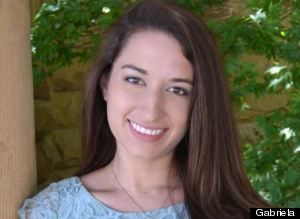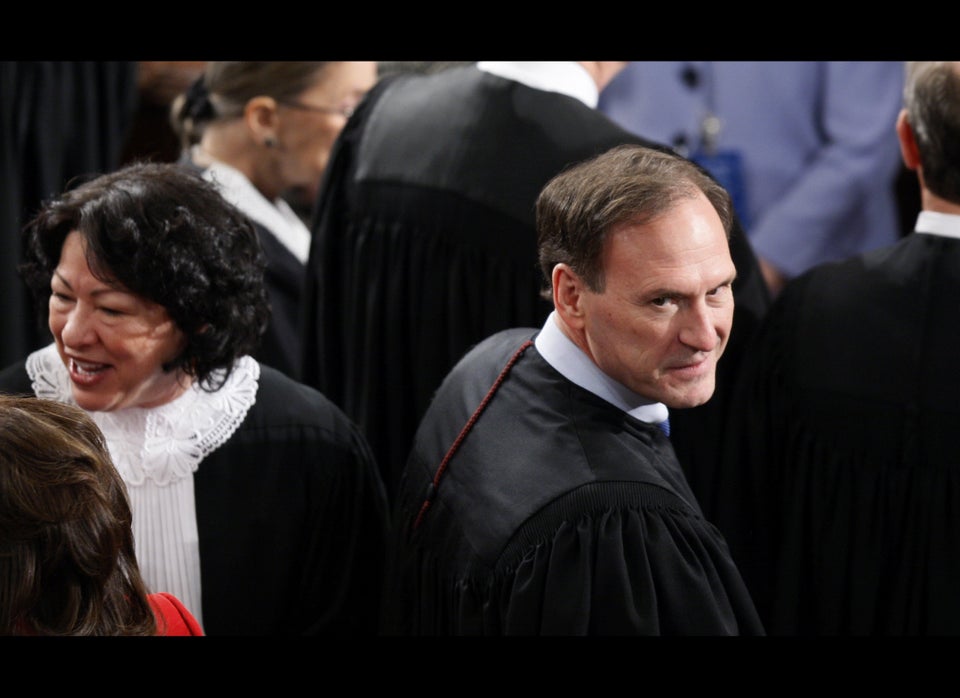WASHINGTON -- In the early winter of 2010, Gabriela Farfan was a freshman at Stanford University planning a career in environmental science. She had been fascinated with the subject since growing up in Madison, Wis.
As a senior in high school, Farfan won top awards in the Intel Science Talent Search for her research on the nanoinclusions of certain gemstones and why they appeared to change color when viewed from different angles.
One day, she got a phone call from an unknown number. It was the White House calling to tell her the president wanted her to be a guest of the first family at the State of the Union address. It was a Monday. The speech was on Wednesday.
Farfan packed her bags and boarded a flight to Washington D.C. There, she and other high-achieving students and scientists got to tour parts of the White House, meet Cabinet officials, spend time at the Smithsonian, and ride with the presidential motorcade down Pennsylvania Avenue to the Capitol.
"I didn't realize I was in a motorcade until I was halfway there. I thought there was an accident before I realized the ambulances and sirens were following us," she recalled.
Soon enough, she found herself in the first lady's box in the House chamber –- sitting on the steps because there weren't enough chairs. She listened intently as the president highlighted the importance of STEM education.
"The idea here is simple," Obama said that night. "Instead of rewarding failure, we only reward success. Instead of funding the status quo, we only invest in reform -- reform that raises student achievement; inspires students to excel in math and science; and turns around failing schools that steal the future of too many young Americans, from rural communities to the inner city."
It was a "profound experience," Farfan recalled, one that encouraged her to keep going. She graduated with honors from Stanford with a bachelor's degree in geological and environmental sciences, and is currently pursuing a Ph.D. in geochemistry at a program run by the Massachusetts Institute of Technology and the Woods Hole Oceanographic Institute. By the time she finishes in 2018, she wants to work in academia or at the Smithsonian.
As archetypes go for young, successful scientists, she fits the president's bill.

But four years after she attended the State of the Union, Farfan is worried about the state of her field. She currently has a grant from the National Science Foundation (three years at roughly $30,000 a year). But she sees a funding pinch taking its toll.
"I have definitely noticed that the atmosphere is bleak right now, especially if the idea was to encourage young people to go into science. Cutting funding for science sends the exact opposite message," she said. "I, myself, have been worried about what will happen in the future. Will I be able to do the research I want to do? Will there be money for it?"
As President Barack Obama gets ready to give his fifth State of the Union address Tuesday, there is a high probability that he will ask lawmakers to respond with a definitive yes to Farfan's questions. Prioritizing scientific research and education has been a staple in many of his major domestic policy speeches, including those to bicameral gatherings of Congress.
The administration has supplemented its rhetoric with concrete action, too. In April 2013, it announced a $3.1 billion commitment to improving STEM education nationwide. In the president's most recent budget, he consolidates the agencies overseeing STEM education initiatives and calls for an increase of 6 percent in overall funding.
But the push has been complicated by years of pressure for deficit reduction. The current budget passed by Congress funds the National Science Foundation at $7.2 billion, which is $67.9 million below the 2013 enacted levels. Both the National Oceanic and Atmospheric Administration, and NASA saw upticks in their budget authority.
But the National Institutes of Health –- the biggest funder of medical research -– failed to make up the losses suffered during the 2013 sequestration, causing several complications. It pushes scientists out of the field and discourages potential ones from entering, but it also impacts the research itself.
"The competition is so fierce to get the money that there is," said Farfan. "Sometimes that compromises the research itself because you have to tailor the proposal to what people want to hear as opposed to what is important."
Other State of the Union guests have recognized these problems as well.
Li Boynton has conducted science experiments since fifth grade, often focusing on water contaminants. She built devices to remove the salt from seawater and, at the age of 18, won a $50,000 scholarship for her work on bioluminescent bacteria (in layman's terms, she showed how living organisms could be made into contamination sensors). Like Farfan, she too, got a call from a random phone number one day in January 2010 and was told that the president wanted her to be a State of the Union guest. The four days in the nation's capital would change her "personally," she said.

"I was extremely introverted and shy, and had naturally low self-esteem, but that whole process of receiving publicity for my work was extremely important in restoring my confidence," she said. "I noticed that when I went out more ... [I] just had more fun during it. People would come up and say: 'You were that girl on the first page of the Houston Chronicle and got to go to the State of the Union.'... I was a mini-celebrity at the time."
Now a student at Yale, Boynton continues to study science, pursuing a bachelor's degree in molecular, cellular and developmental biology.
"There are a million things I want to do," she said of her future. "The problem I have always had is I have way too many interests."
The politics of science funding is not a motivating factor, Boynton said. It certainly hasn't been a problem at Yale, which didn't experience cutbacks like many state universities. But she knows that the issue exists and sees it as a challenge that politicians will have to confront.
"It is not something that I personally noticed," she said, "but I do know it is a problem."
Perhaps no young scientist has been tied to the White House as closely as Amy Chyao. As a high school junior, she met the president at a White House science fair. Just hours after that meeting, Obama gushed about her to a room full of Democratic donors, noting how impressive it was that she had (1) "taught herself chemistry" and (2) designed a project to develop a new cancer drug that isolated and killed cancer cells while leaving the healthy cells untouched.
"So I’m talking to her, pretending like I understand everything that she’s saying," Obama told the room. "And I’m thinking to myself, think about what this means. You’ve got the portrait of Lincoln in the State Dining Room looking down over us. You’ve got an African-American president named Barack Obama. You’ve got a young Chinese-American girl, 16-years-old, who is designing cancer drugs, having taught herself chemistry in high school. That idea of America is alive and well. But we have to nurture it, and we have to sustain it."

Months later, Chyao, too, received a call from the White House, asking her to come to the State of the Union. It was January 2011 -- one year after Farfan and Boynton had attended.
"I remember being extremely nervous. I went with my dad. We had this really big group of people and we went in a motorcade. We had police sirens on," Chyao recalled. "One of the things I was most worried about was trying to walk straight in high heels."
Now 19 and a sophomore at Harvard, Chyao hasn't backed off of her STEM field pursuits. Instead of researching cancer cells, her focus is on applied math.
The night before the 2014 State of the Union address, she said she was aware of the funding challenges facing scientists, even though she hadn't been affected directly. She is pursuing a degree in computer sciences and has aspirations to go to graduate school.
A year after she attended the 2011 State of the Union address, Chyao met the president a third time. She had been invited to the White House as a finalist for a science talent search contest, one of 40 or so individuals from around the United States. At that point, the two were practically on a first-name basis, though she stuck with the formalities when they spoke.
That she had become such a frequent visitor was a testament to how big a science nerd the president is at heart. "It took me almost a year to understand those topics," Chyao said. "He grasped it so quickly." But it also was a personal and not inconsequential investment from the president to the world of science in its own right.
"I think it's really good that he has been supporting STEM education. He organized the first White House science fair, which I was fortunate to attend. And he invited scientists to the State of the Union. Those gestures, even if not that concrete, are great to encourage young people to enter the field."
This article is part of a weeklong series examining income inequality in America in advance of President Obama's State of the Union address. Read more here.

